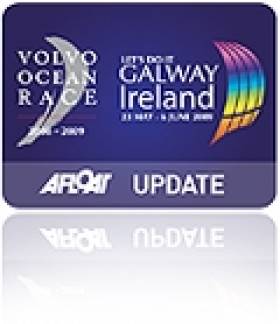Displaying items by tag: trade news
All Eyes on Dubai for Pre-Owned Boat Show
#TRADE NEWS - Growing demand in the Middle East for pre-owned boats is creating a new market for yacht owners looking to sell, as UAE's The National reports.
This weekend's second-hand boat trade show at Dubai Creek Marina is expecting more than 7,000 visitors to peruse the more than 85 vessels on display, comprising the widest selection of boats for sale.
For this year the retail area has been expanded by 20% to make room for new retailers and exhibitors, including a new zone for personal water craft such as Jet Skis.
"There is a lot more demand [in the Middle East] for second-hand boats than new boats. The market has been growing, we have a lot of people from Qatar, Saudi Arabia, Bahrain who come to Dubai to buy a boat," said marina operations manager Abdulla Ali Al Noon.
It's a market that's being increasingly sought by Irish dealers, too, following MGM Boats' visit to the UAE for the Dubai International Boat Show this past St Patrick's weekend.
One of the companies participating in the pre-owned show this year is Al Marakeb Boat Manufacturing, whose Nour Al Sayyed says: "The crowd at the show are people who already know they're buying a boat, it's just a matter of picking one."
The National has more on the story HERE.
#VOLVO OCEAN RACE - Sailing runs in the blood of Dun Laoghaire native Pierce Purcell, following a family tradition that goes back for generations.
The new director of the Irish Sailing Association (ISA) has called Galway his home since leaving school in 1970, and has been involved with the Galway Bay Sailing Club (GBSC) since the beginning, as he told the Galway Independent recently.
Purcell is also the proprietor of Purcell Marine in Clarenbridge, a family-run business that began as a sailing school in 1973 before branching out into selling boats and sailing accessories.
“We supply all kinds of chandlery equipment; boats, trailers, and engines, whatever people need," he says.
More recently, Purcell established the Galway Afloat programme to organise rallies and events for owners of smaller boats in the region.
His efforts more than paid off in his organising of the Parade of Sail in Galway Bay ahead of the arrival of the Volvo Ocean Race fleet, which attracted more than 150 boats for the largest event of its kind in the City of the Tribes.
The Galway Independent has more on the story HERE.
Viking Marine Weathering Storm of Economic Downturn
#ONLINE RETAIL - If Viking Marine boss Ian O'Meara has any regrets, it's that he didn't get into online trade much sooner.
In an recent interview with The Sunday Times' Sandra O'Connell, the 52-year-old managing director explains how the internet has provided him with a low-cost opportunity to diversify his business in these recessionary times.
Aside from retail outlets at The Pavillion in Dun Laoghaire and Kilcoole in Co Wicklow, both serving the vibrant east coast sailing community, the company now has Quickropes.com which provides hundreds of different ropes for any need - not exclusively boating.
"We thought there might be a market there for a specialist site, and it turns out there is," says O'Meara. "It's early days, but it's tipping along nicely."
It makes a refereshing change from the usual trend from losing custom in its brick-and-mortar outlets to the web, with the perception being that prices for everything are cheaper online.
"All too often we get people who come in to try on clothing items for size, only because they want to go and order them online," he says.
Another challenge brought by the internet is the expectation of the variety of stock Viking Marine is expected to carry. "We sell everything from a needle to an anchor," says O'Meara. "When people come in for something, they expect to find it."
But it appears the business is weathering both the choppy waves of the changing marketplace and the storm of the global financial crisis, thanks to some difficult but necessary sail trimming.
"In any case, I'm a sailor," he says, "it's what I do, it's what I love, and the business is still very much a part of that passion."
The Sunday Times has more on the story HERE (subscription required).
Irish Group Acquire Sunseeker
A group of Irish investors has taken a majority stake in luxury boatbuilder Sunseeker. FL Capital Partners, based in Blackrock, Co Dublin, has partnered with Australian bank Macquaried and Haymarket financial to pay €29.9million for the controlling interest in Sunseeker, in a move dubbed by the Wall Stree Journal as a 'rare vote of confidence for a business in a sector that has been badly hit by the financial crisis'.
The consortium is no stranger to taking a gamble - it also owns the Racing Post newspaper.
The move comes despite Sunseeker slipping into the red last year. The luxury motorboat company made a pre-tax loss of £9.1m in the year up to July 2009, compared with a pre-tax profit of £17.8m in the previous year. The Poole-based company was hit with an unexpected £6.8m bill to bailout one of its distributors after they faced financial difficulties last year in addition to a £1.9 trading loss.
Despite the increasingly difficult economic climate, Sunseeker has continued to invest in new boats, with £6m spent on new moulds and the development of a deep-water dock at Portland in Dorset.
The Irish Times reports on the story here, while the Irish Independent describes the company as boatbuilders to James Bond here.
Raymarine rescued from brink of collapse
Boating electronics provider Raymarine was saved from collapse over the weekend with a last-minute buyout.
Negotiations with a 'third party', which turned out to be the eventual purchaser, broke down momentarily, with GPS company Garmin making a last-ditch bid to buy the company. The bid would have been subject to receiving the green light by competition authorities.
Raymarine plc was forced to go into administration when its banking consortium withdrew finance on May 13, casting the future of the company into some turmoil.
As a result, Raymarine plc was put into administration on Friday, with all the working business elements of Raymarine Holdings then immediately sold out of adminstration to the original third party.
The eventual purchaser was Flir Systems, a US-based thermal imaging company, which bought Raymarine at a valuation of £124 million, making a 20-pence-per-share return to shareholders. The purchase price includes Raymarine's debt, which has been put at close to £100million, but the per-share return may diminish further once creditors claims come in.
Although Garmin's per-share bid was higher (£0.35 per share), the immediacy of the Flir bid made it more palatable to the administrators.
The transaction ensures business as usual for Raymarine customers and suppliers.
Raymarine is one of the world's leading radar, GPS and marine instrumentation brands. Flir are a major manufacturer of thermal imaging cameras
All documents relating to the sale can be viewed on Raymarine's investor relations page.

































































